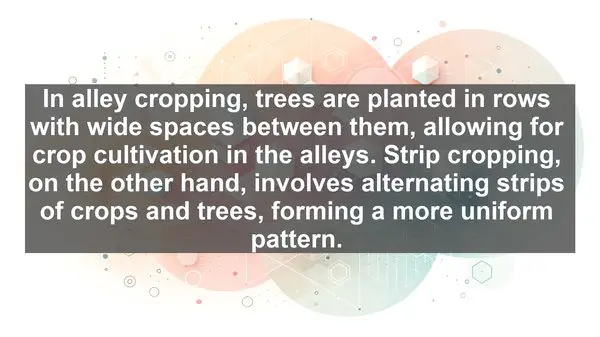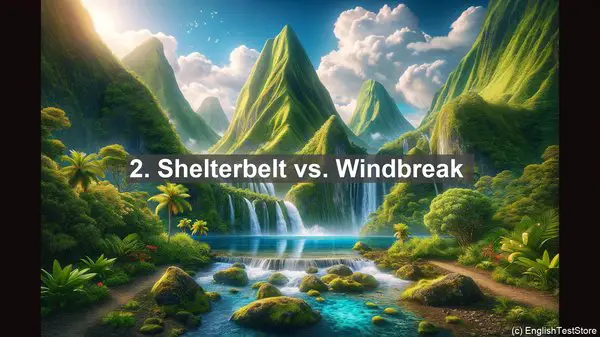Introduction to Agroforestry
Agroforestry is a fascinating field that combines agriculture and forestry. However, it’s not uncommon to come across words that may seem similar but have distinct meanings. In this lesson, we’ll explore the top 10 commonly confused words in agroforestry, helping you avoid any confusion in your studies.
1. Silviculture vs. Agroforestry
Silviculture and agroforestry are often used interchangeably, but they have different focuses. Silviculture primarily deals with the cultivation and management of forests for timber production, while agroforestry encompasses the intentional integration of trees with crops or livestock. So, while both involve trees, their objectives and approaches differ.
2. Shelterbelt vs. Windbreak
Shelterbelts and windbreaks serve similar purposes of protecting fields from wind erosion and providing microclimatic benefits. However, shelterbelts are typically composed of multiple rows of trees and shrubs, offering a more comprehensive barrier. Windbreaks, on the other hand, are single rows of trees, often used to shield specific areas like farmsteads or livestock pens.
3. Alley Cropping vs. Strip Cropping
Alley cropping and strip cropping are both agroforestry practices that involve growing crops alongside trees. However, the key difference lies in their arrangement. In alley cropping, trees are planted in rows with wide spaces between them, allowing for crop cultivation in the alleys. Strip cropping, on the other hand, involves alternating strips of crops and trees, forming a more uniform pattern.
4. Biomass vs. Litter
Biomass and litter are terms often encountered when discussing organic matter in agroforestry. Biomass refers to the total mass of living or recently living organisms, including trees, crops, and their residues. Litter, on the other hand, specifically refers to the dead plant material, such as fallen leaves or twigs, on the forest floor.
5. Coppicing vs. Pollarding
Coppicing and pollarding are methods of tree pruning that promote regrowth. In coppicing, the tree is cut down to the base, resulting in multiple shoots emerging from the stump. Pollarding, on the other hand, involves removing the upper branches, encouraging the growth of new branches from the main trunk. Both methods have historical and practical significance in agroforestry.
6. Nurse Crop vs. Cover Crop
Nurse crops and cover crops are both used in agroforestry to provide temporary vegetation. However, their purposes differ. A nurse crop is typically a fast-growing crop, such as corn or beans, planted alongside tree seedlings to provide initial shade and protection. A cover crop, on the other hand, is primarily used for soil improvement, erosion control, or weed suppression.
7. Mast vs. Browse
Mast and browse are terms related to animal forage in agroforestry. Mast refers to the fruits or nuts produced by trees, such as acorns or chestnuts, which are consumed by animals. Browse, on the other hand, refers to the leaves, twigs, or shoots of woody plants that animals feed on. Both are important food sources in various agroforestry systems.
8. Coppice vs. Coppice with Standards
Coppice and coppice with standards are two approaches to managing woodlands for timber and other products. In a coppice system, the trees are cut down periodically, resulting in multiple stems of the same age. In a coppice with standards system, some trees are allowed to grow to maturity, providing larger timber or other long-term benefits, while the rest are coppiced.
9. Shelterwood vs. Seed Tree
Shelterwood and seed tree are two methods used in forest regeneration. In a shelterwood system, mature trees are gradually removed in a series of cuttings, allowing light to reach the forest floor and stimulate the growth of new seedlings. In a seed tree system, a few mature trees are left standing to provide a seed source for natural regeneration.

10. Ecosystem Services vs. Environmental Goods
Ecosystem services and environmental goods are terms used to describe the benefits provided by forests and agroforestry systems. Ecosystem services encompass a wide range of functions, such as carbon sequestration, water regulation, and biodiversity conservation. Environmental goods, on the other hand, refer to specific products or resources, like timber, non-timber forest products, or wildlife habitat.

